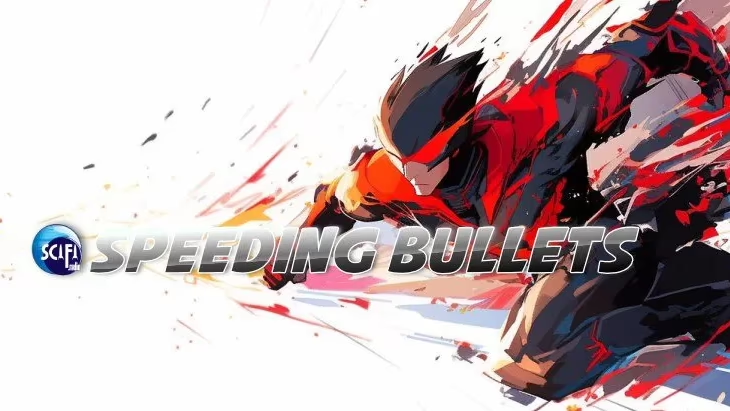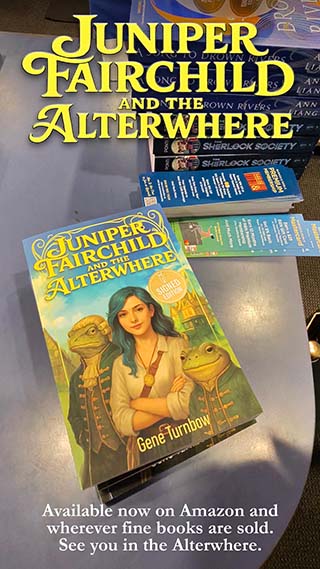
Before comics started chasing Hollywood, superheroes had private thoughts. We could hear their doubts, their fears, their silent victories. Then one day, thought balloons disappeared. What happened? And did comics lose something when they went away?
A reader recently asked:
“Hey Answer-Man, do you know anything about the recent comic writing or editing concepts? If so, what happened to thought balloons? In most modern comics the characters no longer appear to have private thoughts? You remember thought balloons, right? A bubble with rounded edges that told you what the character was thinking. When did this change, and do you know why?”
But after looking at the panels, I was forced to ask: Who was Spider-Man talking to when he’s web-slinging across the city. Is he breaking the fourth wall? (Not likely, that particular stunt is reserved for characters inclined to do such things like Deadpool or She-Hulk) who are both well-known for breaking the fourth wall and talking to the readers directly. Is he just yelling at passing pigeons or has one of the greatest and most unique medium’s lost one of its crown jewels seeking to become a shadow of an entirely different medium?
Once a staple of comic storytelling—floating above characters’ heads like puffs of existential steam—thought balloons have largely faded from mainstream comics. So what happened? Did they take an ill-advised trip to Crime Alley? Did an editorial decree erase them from continuity? Not quite. Their decline can be traced to several key factors:
THE RISE OF CAPTIONED NARRATION
(a.k.a. Internal Monologue Boxes)

Starting in the 1980s, comic writers began phasing out thought balloons in favor of caption boxes—those neat little rectangles of internal monologue that often color-code themselves to a character’s personal brand of brooding. This shift wasn’t just a random stylistic quirk. It was a deliberate attempt to make comics feel more mature, introspective, and, let’s be honest, a little cooler.
Thought balloons, with their rounded, bubbly shape, often felt too on-the-nose: “I need to escape!” screamed the text, spelling things out with all the subtlety of the Bat-Signal. By contrast, caption boxes allowed for more nuance:
— The walls close in. No light. No hope. Just breath and blood and silence.
See? Same thought, but now it’s poetry. Writers like Frank Miller, Alan Moore, and Chris Claremont championed this new approach, inspired in part by literary fiction and film noir. In books like The Dark Knight Returns (1986) and Watchmen (1986), caption narration replaced the old-school thought balloon, letting characters’ internal voices feel sharper, grittier, and more novelistic. The result? A storytelling tool that made comics feel sophisticated—or at least as sophisticated as a medium that still featured spandex and supervillains with pun-based names could reasonably get. And so, thought balloons began their slow fade into history, replaced by caption boxes—sleeker, moodier, and infinitely more fashionable. But was that the only reason for their demise? Not quite.
INFLUENCE OF FILM AND TELEVISION

As comics evolved, they didn’t just draw inspiration from pulpy adventure novels and Saturday morning serials—they also started cribbing notes from Hollywood. And in movies and TV, there are no thought balloons. (Imagine if Die Hard had little floating bubbles above John McClane’s head: “Okay, gotta take out these terrorists, but first, my feet really hurt.” Not quite the same.)As comics became more cinematic in their storytelling, many creators began to see thought balloons as an outdated relic—something that broke immersion rather than enhancing it.
The goal was to make characters feel more real, and in real life, people don’t walk around with their internal thoughts hovering in the air for all to read. (If they did, dating and job interviews would be a lot more interesting.) Instead, writers and artists leaned on techniques borrowed from film:
- Subtext and facial expressions replaced clunky internal thoughts. Instead of “I’m nervous about this fight” in a thought balloon, you’d get a tight close-up on a clenched jaw or sweat forming at the temple.
- “Show, don’t tell” storytelling took center stage. If a hero doubted themselves, it was in their body language, their hesitation before leaping into battle—not a floating thought bubble spelling it out.
- Dialogue-driven characterization became the norm. Writers let interactions between characters reveal their thoughts rather than relying on exposition. If Spider-Man was struggling with self-doubt, he might crack an extra joke, his words undercut by a slightly shaky hand.
One of the biggest turning points in this cinematic shift came with Marvel’s Ultimate Universe (2000), which redefined superhero comics to feel like modern blockbuster films. Under Brian Michael Bendis and Mark Millar, the Ultimate line tossed thought balloons straight into the nostalgia bin. In their place? A mix of cinematic captions and snappier, naturalistic dialogue that made characters feel more like movie protagonists than old-school comic book heroes. By this point, thought balloons weren’t just passé—they were practically extinct. But the story of their downfall doesn’t end here. There was still another key factor waiting in the wings…
THE ‘DARK AND GRITTY’ SHIFT
(Post-Watchmen & The Dark Knight Returns Era)

By the late ’80s, superheroes weren’t just getting darker—they were getting grittier, broodier, and way more likely to monologue about the crushing weight of existence. Thought balloons, with their tendency to blurt out a character’s emotions like an overenthusiastic diary entry, didn’t exactly fit the new aesthetic. Instead of heroes thinking things like, “I can’t let him get away!”, writers opted for a more detached, ambiguous approach. Now, the reader wasn’t spoon-fed a character’s emotions—they had to work for it, piecing together thoughts from narration, dialogue, or the absence of both. Take the key architects of this era—Frank Miller, Alan Moore, Brian Michael Bendis, and Warren Ellis—who all leaned into this more restrained style:
- Miller and Moore pioneered it with The Dark Knight Returns (1986) and Watchmen (1986), using fragmented narration to suggest a character’s mindset rather than explicitly stating it.
- Ellis and Bendis, coming in later, embraced clipped, film-noir-inspired dialogue and tense silences. If a character was scared, you wouldn’t get a thought balloon screaming, “I hope I survive this.” Instead, they’d just take a drag from a cigarette, say nothing, and let the panel linger.
This shift wasn’t just about style—it was about making comics feel more adult. Thought balloons, once a fundamental storytelling tool, started to feel old-fashioned, too Silver Age. They reminded readers of a time when Superman mused about his double life in little white bubbles rather than standing on a rooftop, silently brooding while rain poured down in dramatic slow-motion. By the early ’90s, thought balloons weren’t just out of favor—they were practically radioactive.
If a writer did use one, it wasn’t because they hadn’t gotten the memo—it was because they were intentionally leaning into retro aesthetics. And in an era where comics were chasing realism (or at least hyper-stylized realism), there was no room for something that reminded readers of a time when Batman’s biggest concern was how to juggle crime-fighting with his date with Vicki Vale. With all these factors working against them, thought balloons had all but vanished. But did they disappear completely? Not quite. There were still a few outliers keeping the tradition alive…
DECOMPRESSED STORYTELLING & ‘SHOW, DON’T TELL’
By the 2000s, comics weren’t just becoming more cinematic in tone—they were changing pacing, too. Gone were the days when Spider-Man could meet a villain, fight them, deliver a quip, and wrap up the story in 22 pages. Now, a single conversation could stretch across an entire issue, and Batman brooding on a rooftop could take four panels minimum. This shift—known as decompressed storytelling—spread across mainstream comics like a symbiote, emphasizing slow-burn tension, realistic dialogue, and moments that breathed. And with this new approach, thought balloons became even more obsolete. Rather than a character explicitly thinking about what they were feeling, artists leaned on facial expressions, body language, and cinematic panel sequencing to get the point across. A hero doubting themselves? No need for “What if I’m not strong enough?” in a thought balloon. Instead, you’d get:
- A close-up on their furrowed brow.
- A silent panel where they hesitate before throwing a punch.
- A zoom-out shot where they’re framed small against a vast, lonely skyline.
Writers like Brian Michael Bendis, Grant Morrison, and Mark Millar pushed this technique to the limit. Bendis, in particular, was famous for dialogue-driven storytelling, letting characters talk their way through emotions instead of relying on internal monologue. Meanwhile, Morrison and Millar embraced silent panels, trusting the art to tell the story without the crutch of thought balloons or excessive narration.
The end result? Comics felt more modern, more cinematic, more sophisticated. And thought balloons, once the bread and butter of the medium, started to look like an artifact from a different era—something that belonged in the same dusty comic book bin as editor’s notes explaining what happened last issue and Superman turning into a lion for some reason. With each passing year, the medium moved further away from its old storytelling conventions. But was the extinction of thought balloons truly permanent? Or could they still find a way to survive in the modern age?
THOUGHT BALLOONS BECAME TOO CAMPY TO LIVE
If thought balloons had a kryptonite, it wasn’t just the rise of caption boxes or the influence of cinema—it was their own reputation. By the time the 1990s rolled around, thought balloons had become synonymous with something no self-respecting comic wanted to be called: campy. Back in the Silver Age (1956–1970s), thought balloons were everywhere, often pulling double duty as both exposition dumps and emotional signposts. Characters didn’t just think things—writers made sure readers got every thought, no matter how obvious:
(Batman, hanging over a pit of sharks):
“The Joker has outwitted me! If I don’t find a way to free my hands, I’ll be fish food in seconds!”
Meanwhile, in the modern era? The same moment would probably be depicted in three silent panels—one on Batman’s tense expression, one on the snapping jaws below, and one on a close-up of his hand, subtly working on a concealed Batarang. No need to spell things out when the art and pacing could do the heavy lifting. As comics matured and the industry began catering to an older audience, anything that felt like it was “talking down” to readers had to go. Thought balloons, with their tendency to over-explain everything, became an easy target.
Writers and editors increasingly viewed them as a relic of a bygone era, a storytelling tool that made comics feel like kids’ books rather than the serious, adult-leaning medium they were trying to become. By the 1990s, thought balloons were effectively non-existent. If they showed up at all, it was either in a deliberately retro throwback or as an ironic nod to comics’ more innocent past. In a world where superheroes were grim, violent, and emotionally tortured, little floating bubbles of raw, unfiltered thoughts just didn’t fit the aesthetic anymore. At this point, thought balloons weren’t just out of fashion—they were uncool. And in an era where everyone was chasing edginess, that was the ultimate death sentence. But was this truly the end of thought balloons, or was there still hope for a comeback?
ARE THOUGHT BALLOONS COMPLETELY GONE?
Not quite. Like a long-lost sidekick making a surprise return in the final act, thought balloons haven’t vanished entirely—they’ve just gone underground. While mainstream superhero comics have largely abandoned them, a few rebels and innovators still keep the tradition alive, though often in a more refined, intentional way.
- Tom King (DC Comics) has flirted with bringing them back, but in a more subtle, modernized form—less Silver Age exclamation, more psychological depth. His use of thought balloons leans toward introspection rather than blunt exposition, showing they can still work when handled with nuance.
- Ed Brubaker & Sean Phillips’ Criminal doesn’t use traditional thought balloons, but its caption-heavy internal monologues serve much the same purpose—providing deep, first-person insight into the protagonist’s thoughts in a way that echoes the classic technique.
- Jeff Lemire’s Sweet Tooth plays with narrative voice in ways that feel reminiscent of thought balloons, though filtered through a more literary, storybook-like approach.
That said, in mainstream superhero comics, thought balloons remain rare. And it all comes back to the industry’s increasingly Hollywood-first mentality. With comics serving as pre-production storyboards for movies, publishers want storytelling methods that match what audiences expect from film and television. That means dialogue, narration, and visuals doing the heavy lifting—no floating bubbles of internal monologue in sight. So, are thought balloons dead? Not exactly. But for now, they’re mostly hiding out in the shadows—waiting, perhaps, for the right moment to make a heroic comeback.
Thaddeus Howze is an award-winning essayist, editor, and futurist exploring the crossroads of activism, sustainability, and human resilience. He's a columnist and assistant editor for SCIFI.radio and as the Answer-Man, he keeps his eye on the future of speculative fiction, pop-culture and modern technology. Thaddeus Howze is the author of two speculative works — ‘Hayward's Reach’ and ‘Broken Glass.’













You must be logged in to post a comment.